
William Garden Blaikie FRSE was a Scottish minister, writer, biographer, and temperance reformer.

The Free Church of Scotland is a Scottish denomination which was formed in 1843 by a large withdrawal from the established Church of Scotland in a schism known as the Disruption of 1843. In 1900, the vast majority of the Free Church of Scotland joined with the United Presbyterian Church of Scotland to form the United Free Church of Scotland. In 1904, the House of Lords judged that the constitutional minority that did not enter the 1900 union were entitled to the whole of the church's patrimony, the Free Church of Scotland acquiesced in the division of those assets, between itself and those who had entered the union, by a Royal Commission in 1905. Despite the late founding date, Free Church of Scotland leadership claims an unbroken succession of leaders going all the way back to the Apostles.
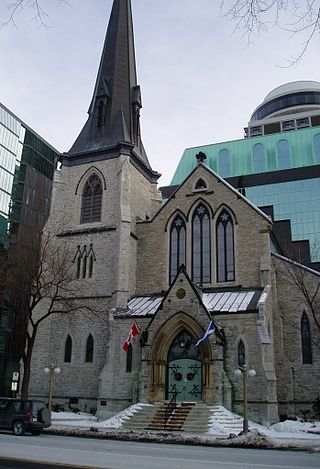
St. Andrew's Presbyterian Church is the oldest Presbyterian church in Ottawa, Ontario, Canada.

Knox Presbyterian Church is a Presbyterian Church in Ottawa, Ontario, Canada. It is named after John Knox, a founder of Presbyterianism in Scotland.

Edinburgh: The New Town Church of Scotland serves Edinburgh's New Town, in Scotland. It is a congregation of the Church of Scotland, formed on 1 February 2024 by the union of St Andrew's & St George's West and Greenside Church.
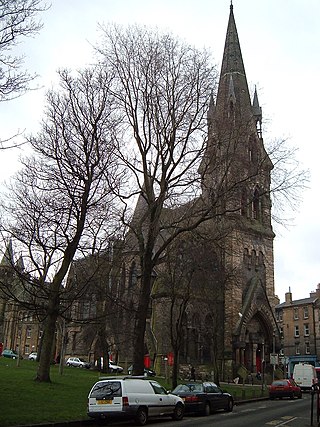
Barclay Viewforth Church is a parish church of the Church of Scotland in the Presbytery of Edinburgh.
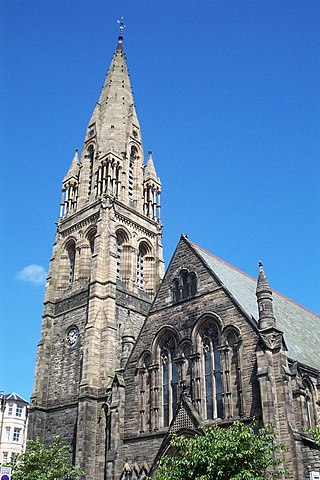
Mayfield Salisbury Church, formerly Mayfield North Church and also informally known as Mayfield Church, is a parish church of the Church of Scotland. It is located in the Newington district of Edinburgh, approximately 1.5 miles (2.4 km) south of the city centre. The building was designed by Hippolyte Blanc, with construction taking place between 1875 and 1879. Extensive renovations were carried out in 1969 following a major fire which destroyed most of the roof. The building is noted for the range and quality of its stained glass. The present congregation is the product of several mergers, most recently of Mayfield Church with Salisbury Church in 1993.
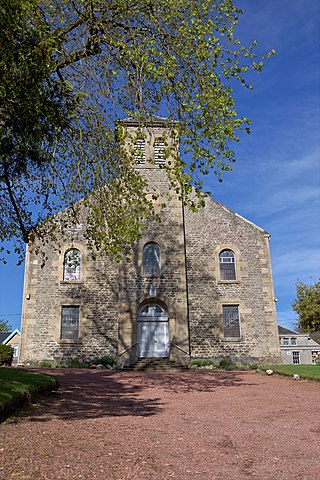
Abbeygreen Church is a congregation of the Free Church of Scotland in the small town of Lesmahagow, Lanarkshire. As a Christian congregation, it is presbyterian and reformed; holding the Word of God, the Holy Bible, as the supreme rule of life and doctrine and the Westminster Confession of Faith as a sub-ordinate standard, which helps explain the doctrines of the Christian faith. Being Presbyterian, it serves as part of the Free Church of Scotland Presbytery of Glasgow and seeks to faithfully serve God in Lesmahagow and the surrounding area. Having a missional outlook it is involved with a number of missionary organizations including, but not only, UFM Worldwide and Rose of Sharon Ministries, and helps with the organization and support of the Scottish Reformed Conference.

Colinton Parish Church is a congregation of the Church of Scotland. The church building is located in Dell Road, Colinton, Edinburgh, Scotland next to the Water of Leith.

St. John's Renfield Church is a parish church of the Church of Scotland, serving Kelvindale in the west end of Glasgow, Scotland. It is within the Church of Scotland's Presbytery of Glasgow.

Baillieston St Andrew's Church is a congregation of the Church of Scotland, a member of the Presbyterian Church. The church building is located on the corner of Bredisholm Road and Muirhead Road, Baillieston, Glasgow, Scotland. The church today serves the town of Baillieston.

South Leith Parish Church, originally the Kirk of Our Lady, St Mary, is a congregation of the Church of Scotland. It is the principal church and congregation in Leith, in Edinburgh. Its kirkyard is the burial place for John Home and John Pew, the man from whom the author Robert Louis Stevenson reputedly derived the character of Blind Pew in the novel Treasure Island. The church has been repaired, used as an ammunition store and reconstructed but still retains the basic layout of the nave of the old church.
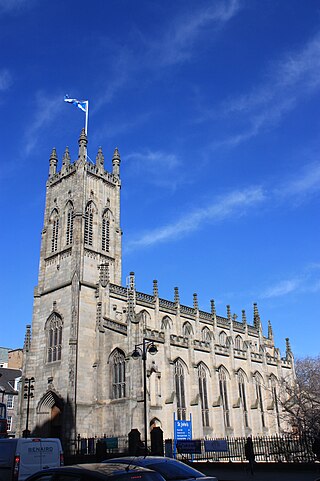
The Church of St John the Evangelist is a Scottish Episcopal church in the centre of Edinburgh, Scotland. It is sited at the west end of Princes Street at its junction with Lothian Road, and is protected as a category A listed building.
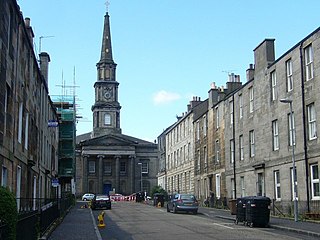
North Leith Parish Church was a congregation of the Church of Scotland, within the Presbytery of Edinburgh. It served part of Leith, formerly an independent burgh and since 1920 a part of the city of Edinburgh, Scotland.

Patrick Wilson was a British architect with a long career spanning across the 19th century from the Georgian aesthetic to the Victorian. He was a strong advocate of purpose-built housing for the poor working closely with the Rev. Thomas Chalmers. Most of his works are in Edinburgh, the most notable of which is the first ever colony style housing in the city, the Shaw Colonies, a very innovative building form.
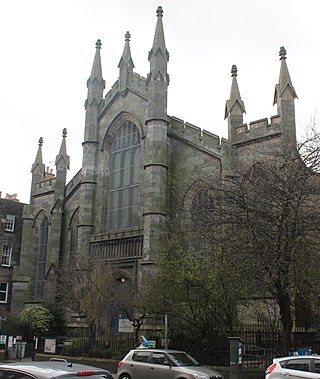
The Southside Community Centre is a community centre in the Southside, Edinburgh, Scotland, United Kingdom. The centre opened in 1986 and occupies the former Nicolson Street Church, which was completed in 1820.
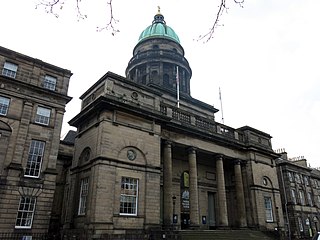
West Register House is a building of the National Records of Scotland, located on Charlotte Square in Edinburgh, Scotland, United Kingdom. The building was constructed between 1811 and 1814 as St George's Church and converted to its current purpose as a records office between 1964 and 1970.

West St Giles' Parish Church was a parish church of the Church of Scotland and a burgh church of Edinburgh, Scotland. Occupying the Haddo's Hole division of St Giles' from 1699, the church was then based in Marchmont between 1883 and its closure in 1972.

The Highland Church was a Gaelic-speaking congregation of the Church of Scotland, based in Tollcross, Edinburgh. Formed by the union of St Oran's Church and St Columba's Gaelic Church in 1948, the congregation continued united with Tolbooth St John's in 1956.
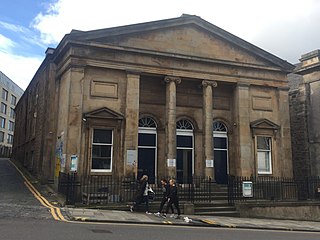
St Oran's Church was a Gaelic-speaking congregation of the Church of Scotland in Edinburgh. Originating in the early 18th-century, the congregation continued until 1948, latterly meeting at Broughton Street.





















